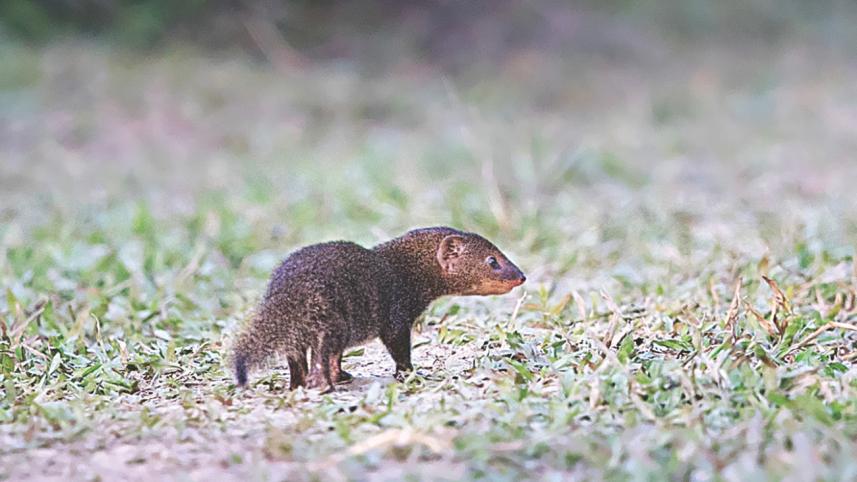Twilight in the Haor

Haors are shallow depressions in the land. They can spread over many square miles. During monsoon haors fill with water which empties out at winter. Hail Haor near Moulvi Bazar is one such place. Its fishponds, lakes, rice paddies and wide-open fields are home to numerous birds during winter.
I love visiting the Haor, but I always leave before nightfall as it becomes dark and lonely and my sense of security prevails. On this day, however, my microbus got stuck in deep mud on the dirt road. It was late afternoon, and in the time it took to free the microbus, I saw twilight in the Haor.
The sun had been hot all day but as it travelled westward over the far end of Baikka Beel, a large lake at the western end of the Haor, its hard rays lost their edge. The colour of the sky changed rapidly from blue to pink to red.
The few, hardy people who live in the Haor were walking home after the day's work. Many had laboured all day in rice fields harvesting new crop and planting seeds for the next round. Some had work tools slung over their shoulder and exhaustion in every footstep. Others rowed their boats home from fish-related work – fishing or tending to fishponds. Shepherd boys rounded up herds of water buffaloes and walked them home.
A family of mongoose emerged from a roadside bush thirty feet ahead. It lingered in the afternoon sun, each member looking around confused, as if trying to decide which way to head. Finally three of them returned to the bush while the fourth decided to go it alone down the road. Of course it took off in a big hurry when it saw me.
Over a large fishpond partially covered by water hyacinth, a swarm of bee-eaters was feasting on flying insects. They seemed frantic in their search for the last meal of the day. They hunted until their food was exhausted – or it was too dark to see – before heading back to their roost.
Other birds returning home reminded me of Kazi Nazrul's song shajher pakhira firilo kulay about the longing a girl feels as she watches birds, but not her lover, returning home at dusk. Indeed, all the birds were in a rush to get home. Groups of 20-30 pied starlings (pakra shalik) zipped by in a shifting, undulating formation. Even laggards like egrets and herons tried to fly fast, staying in V-shaped formations of up to fifty birds. Occasionally a single large bird – grey heron, osprey or kite – flew alone while looking for a last meal. Pairs of fast-moving doves appeared overhead for a brief second or two before disappearing.
For the night all these birds have to worry about safety from nocturnal predators. Some, such as egrets, sleep while standing in the water so that even the slightest wave or disturbance wakes them. Others hide themselves well, for example, in holes in trees.
A static layer of thin mist had spread above the water bodies of the Haor. As winter progressed, this mist would become thick fog, bane of the bird photographer. For now, though, it floated harmlessly in the distance, lending a soft look to the waterscape.
Several days after that evening, what stays with me is the soft silence and a land that - for a short instant - seemed frozen in time.
facebook.com/tangents.ikabir



 For all latest news, follow The Daily Star's Google News channel.
For all latest news, follow The Daily Star's Google News channel.
Comments